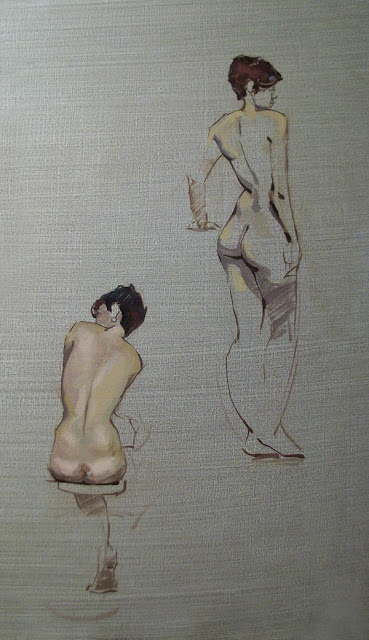Last night I went to an open figure drawing session in St. Augustine, a beautiful town on the coast of Florida. We started with five 3-minute gestures and then a long pose. I only had a huge 18 x 36 inch canvas with me. My plan was to do a couple of small paintings on it. The pose the model took just happened to be perfect for the whole thing. I started my drawing the way I usually do. The first drawing took about an hour. Then I went to a darker color and re-drew the areas which needed weight. Then a few of the bright lights. The spotlight was behind the model which is why there is such a sharp bright light along the edge.
Unfortunately, the model thought that the break time was equal to the posing time. Felt like 15 on and 15 off, and the gesture drawings ate up 15 minutes at the begining. With twenty minutes left I had only a drawing and the lights down. I knew I wouldn't be able to finish the figure in that amount of time and I liked the drawing as it was. I decided to paint as much of the background as I could and surround the figure in whatever time was left.
The above is the end result. I say it is about an hour and a half to two hours of actual painting time. It was quick and rushed and fun and i'm pretty happy with the way it turned out.










































 If I know in advance I have several sittings on a portrait, I will stop when the drawing is complete and let the painting dry. If I make a mistake in painting on the second sitting I can simply wipe off the paint and my dry drawing is still underneath.
If I know in advance I have several sittings on a portrait, I will stop when the drawing is complete and let the painting dry. If I make a mistake in painting on the second sitting I can simply wipe off the paint and my dry drawing is still underneath. With a still-life I try to put in as much information as possible. The better the drawing the easier it is to make the painting.
With a still-life I try to put in as much information as possible. The better the drawing the easier it is to make the painting..jpg)